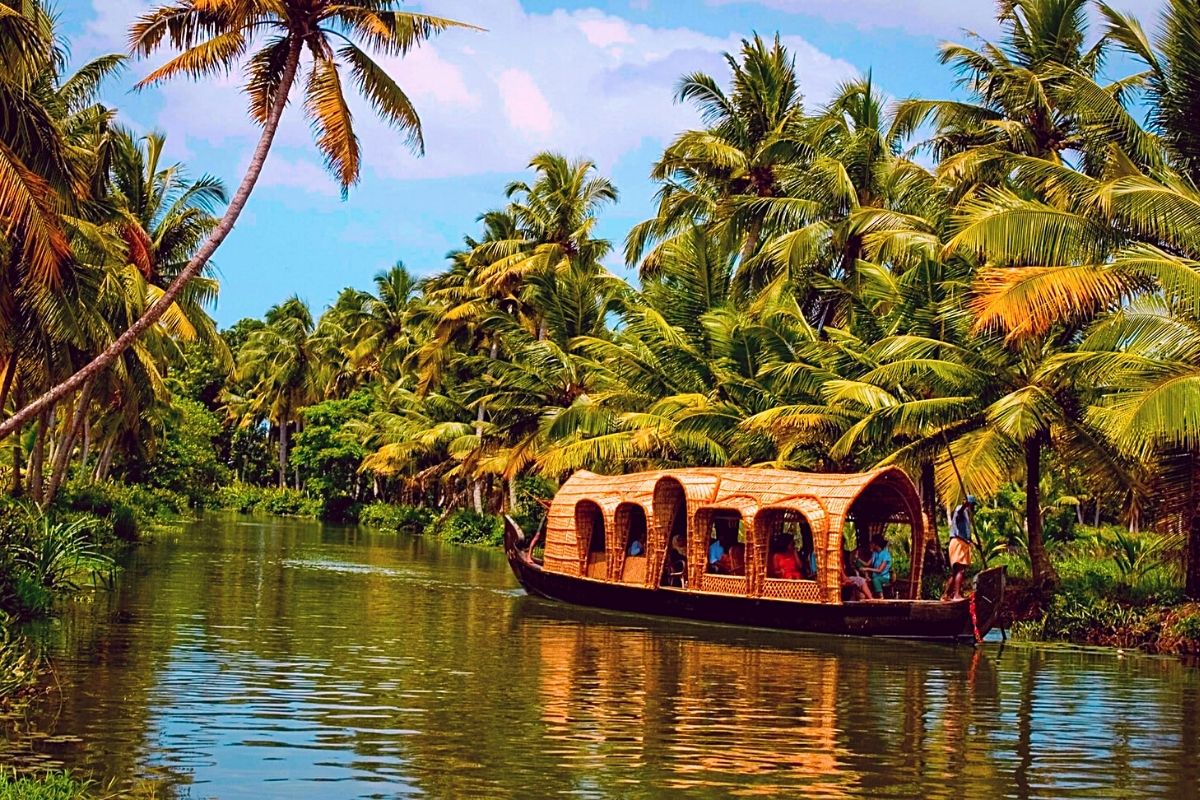
Christianity in India is generally associated with the Colonial powers. However, the Churches built by the Apostle Thomas demonstrate the presence of Christianity in India before the Colonial era. Interestingly, these Churches are in the vicinity of Christian communities.
This article is about the earliest seven Churches and the presence of Christian communities that pre-date the colonial period by 1500 years.
The Ministry of St. Thomas in the Malabar Coast
The Apostle Thomas arrived on the Malabar Coast (Kerala) in 52 AD. It is generally believed that St. Thomas set out to preach the Gospel of Christ to the Jewish diaspora in India (cf. Acts of St.Thomas).
Lyrical traditions like the Margam Kali Pattu, the Rabban Pattu, and the Thomma Parvam celebrate St. Thomas’s arrival. St. Thomas’s ministry along the Malabar Coast impacted the migrant Jewish community living there and also the local populace.
The followers of St. Thomas began to grow as a vibrant Christian community and came to be known as St. Thomas Christians. It is believed that St.Thomas built seven Churches (Ezhara Pallikal).
Interestingly, these Churches are strategically located in trading centres along the Malabar Coast. Moreover, the Churches are built near the sea or river coasts near backwaters. St. Thomas also installed crosses in all the seven churches, which seems to be his routine practice.
Kodangallur Church
This church was established by St. Thomas in 52 AD. Kodangallur is an important city situated on the banks of the River Periyar, on the Malabar coast of South West India. According to tradition, Thomas was preaching in Mylapore when Keppa, the son-in-law of King Cheraman Perumal, requested him to come to Kodangallur.
Thomas preached the Gospel and the ruler of Kodungallur along with his family, 40 Jews and a few local priests embraced the Christian faith. One of the locals was Maliekal Thomas Ramban who composed the famous Ramban Pattu song.
Palayoor Church
Palayoor was the stronghold of Jewish merchants and the local priests. The Apostle met the Jewish merchants at the place called Judankunnu (or the hill of Jews) and preached the Gospel to them.
Kottakkavu Church
The Kottakkavu Church is the third church established by St. Thomas. The history of this place dates back to 3000 BC when the Babylonians, Assyrians, and Egyptians came to the Malabar coast in search of spices. When St Thomas arrived at Kottakkavu, it was a big harbour and an important business centre due to its trade routes.
St. Thomas preached the Gospel to the Jewish diaspora and the locals. Around 1770 people were baptised. St. Thomas established the church and installed a wooden cross in the church, which was present until the 18th century.
Kokkamangalam Church
It is believed that when St Thomas arrived at Kokkamangalam and preached the Gospel, many people embraced the faith and were baptised. This incident is recorded in the Rampan Pattu, an ancient form of Christian folk singing in Kerala. St Thomas erected a Cross for this faithful community, but it was desecrated due to hostility. The Cross is now installed at Pallippuram instead.
Nilakkal Church
This church was established between the forest trade route between Kerala and Tamil Nadu in 54 AD. Thomas visited this place and preached the Gospel. It is believed that the Church came into existence when the Apostle baptised 1100 people.
Niranam Church
The Niranam Church, also popularly known as Niranam Valiya Pally (Big Church), was established around 54 AD. Four prominent families from the region accepted the Gospel teachings and were given the primary responsibilities at this church to carry on the faith.
Kollam Church
According to local tradition, St. Thomas established this church near Kollam, a major port city of the Chera dynasty. The Apostle Thomas remained in this port city and preached for a year. He baptised 1400 people and set up a Cross for them to worship.
Apostle Thomas is also known as the Apostle of India
The Apostle Thomas primarily came to minister to the Jewish community who had settled in India in the 1st century AD. He also ministered to the local people, several of whom embraced the Christian faith. Christian communities existed in India during the 1st century AD itself due to the endeavours of St Thomas the Apostle in India.
Thus F E Keay writes:
“The visit of St Thomas to South India cannot be positively proved. The question had been much discussed and there seems little prospect that a final verdict can be given. The local tradition with regard to his visit is very strong and there is no other rival local tradition as to the origin of the Church in South India. The tradition has been held also outside India both in the West and in the East from very early times. There is nothing improbable in the story that the Apostle should have travelled as far as India to preach the Gospel. If the story cannot be proved, it is certainly by no means unlikely.”
Conclusion
The seven historical Churches and the presence of Christian communities in the 1st century are living proof that Christianity existed in India long before colonialism entered India.









